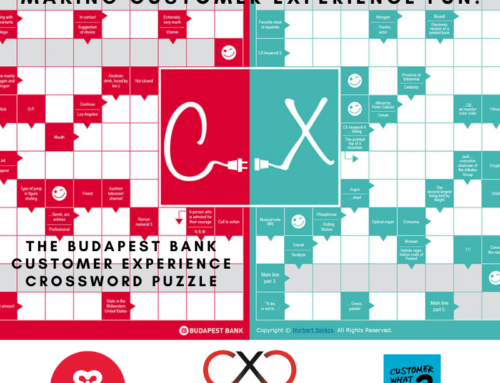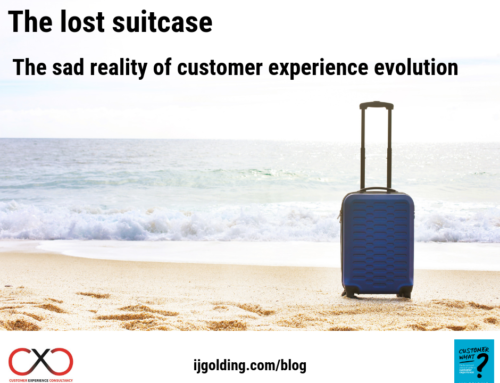This is not the first time I have written about bricks and mortar retail stores. The British high street has been under significant pressure for many years now – I have documented its demise since I started writing three years ago – you can read my opinions in the following posts:
- I’m not paying to park! Why the British high street might be struggling
- Stop talking and act NOW!! Is it too late for our high streets?
- ‘What a brilliant day!’ How communities can help revive Britain’s High Streets
- Saving Britain’s High Streets – what can we learn from our European cousins?
There are many factors that are contributing to the steady increase in the closure of bricks and mortar stores every year. Only yesterday (16th March 2015) the BBC reported that ‘Shops desert High Street at faster rate in 2014’ – almost three times the number of stores closed down in 2014 compared to 2013. The demise of the high street is showing no sign of abating. The BBC article which reported the findings of research commissioned by PwC included the following quote from Mark Hudson, retail lead at PwC:
“Customers are embracing new mobile technologies, traditional retail channels to market are being wiped out and new channels are being created, often in the online rather than the ‘real’ world,”
It is difficult to disagree – it is also difficult to deny that this has been the case for many years now – in fact the online revolution has been in full swing since the mid noughties! That being the case, why is it that the experience that consumers have on the high street still ‘feels’ exactly the same as it did in the mid eighties?!!!
In 2015, shopping in a bricks and mortar store is like walking back in to a bygone age. Despite the introduction of a vast array of new technology, it is remarkably rare to see any of the technology we use in our daily lives even being present in the high street store. There are exceptions of course – the Apple store was among the first to change the concept of a physical high street experience – well-informed and knowledgeable staff seamlessly integrating with beautiful technology, using their own products to conduct purchases. I am not personally a user of Apple products, but have always been a fan of the Apple store concept.
The experience of shopping in the high street is often not one that consumers relish in the modern world. From cramped and confusing store layouts, to unhelpful, uninformed staff, to a lack of integration with online offerings. For example, I find shopping in Boots a real chore. Do not get me wrong – I like Boots – they play a vital role in our high street. However, I do not enjoy the shopping experience. Every store layout seems to be different. It is like an episode of the Krypton Factor (for these of you who can remember) trying to find the things you need. Surely the experience could be better?
Then there is B&Q. Another giant of British retailing – and another retailer I admire. However, yet again, the thought of going to B&Q makes me start to sweat. I know even before I have arrived that I am going to have to find a member of staff to show me where the things I need are located. It is annoying, time-consuming and not very enjoyable. It is no wonder that we prefer to sit at home and conduct our shopping in front of a plethora of different size digital screens.
In my opinion, the reason why the ‘bricks and mortar’ shopping experience feels like it has for decades is that the experience we still have as consumers is one that was conceived and designed decades ago – very few retailers have considered how they need to REDESIGN the shopping experience to meet the needs of the shopper in 2015. Even fewer (if any at all) have thought about the changing needs of the consumer in the future. Ultimately, the shopping experience today is NOT ‘shopper centric’ – for the high street to find its purpose again, I urge retailers to consider the need to drive ‘shopper centricity’.
So what do I mean by ‘shopper centricity’? I do not think it is rocket science to consider how to redesign the shopping experience to better fit in to the life of the modern consumer. Being shopper centric means that your store puts the shopper at the ‘heart’ of everything it does. It means that your store is designed to be functional – it allows the shopper to do what she needs to do. It needs to be designed to be as accessible as possible – it enables her to do what she wants in a store as easily as possible. It needs to be designed to leave her feeling as though she has actually had an experience – one that she will remember…… and for the right reasons. To achieve all of these things, retailers need to recognise that technology and channels can/should/must start to integrate seamlessly so the consumer is able to achieve everything they want.

A retailer in Brazil a few years ago introduced clothes hangers linked to Facebook. The hangers display the number of likes related to the product that adorns it. What a brilliant idea – an idea that I am yet to see in the UK. It is a simple yet powerful example of linking technology and channels together. Walking into a bricks and mortar store CAN feel like the online experience (and vice versa).
In 2013 I delivered a presentation on customer experience to a telecoms business, Pennine Telecom and some of its clients. One of the companies at the presentation was Motorola Technologies. They were developing some amazing things that could transform the experience for companies and customers across a number of industries. They showed me their ‘electronic badge’ technology – see the image below. This replaces current plastic badges that you ‘swipe’ to get in and out of buildings, and that show your name, picture etc.. The badges enable businesses to know where their employees are at any time, delivering real-time tasks. They are looking at getting them into hospitals (replacing pagers), and retailers. Think how the experience could be improved if an employee had an electronic badge to advise you where a product was in the store. Even better – what if the store was enabled with touchscreens that consumers could use themselves to find an item….. or to order it online if not available?

This technology already exists…..yet it is still not present in the experience we have in most bricks and mortar stores. Then we come to mobile. The technology that the majority of consumers use as almost an extension of their physical form! We eat, sleep, run, play, work and SHOP with the things – yet they are still largely not integrated into the physical shopping experience. Mobile technology is a huge opportunity for retailers to radically redesign the shopping experience. The question is who will e the first to do it effectively?
I envisage a world where mobile technology helps the consumer to CHOOSE how they want to shop – rather than the retailer defining how the MUST shop. Imagine this scenario:
- I need to buy an item of clothing for a party tonight – I need it quickly
- My mobile tells me where I can find the item (in stock)
- My mobile tells me independent customer reviews of the item
- My mobile tells me my transport options to get there and where to park (free and paid)
- My mobile informs me of payment options
- On entering the store, my mobile and he store ‘connect’ with each other
- My mobile tells me where the item is in the store
- My mobile suggests other items that could complement my purchase
- I leave the store and my mobile automatically pays for the items in my possession
- Depending on the time of day, my mobile tells me where I can grab a bite to eat close to store
Madness? Feasible? An experience that would leave you feeling positive – emotionally? Whether this type of scenario is for you or not, we must recognise that the days of the existing high street store experience are numbered. Until or unless retailers recognise that they must redesign the experience to make better use of the technology that their customers are already using, the media will continue to report ever-increasing numbers of shop closures. We must put the shopper back at the heart of the shopping experience again – and design an experience that genuinely is Shopper Centric!







Leave A Comment